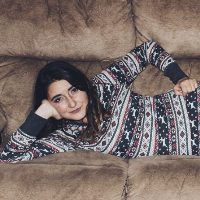More about Henrietta Rae
Works by Henrietta Rae

Contributor
To pursue her passion at a young age, 14-year-old Henrietta Rae dropped out of school to copy paintings at the British Museum.
If I had known that was an option, I probably would have deuced out of my school too. But don’t worry, she didn’t remain uneducated for long; after a year, she joined Heatherley’s art school. It was soon after this that Rae’s perseverance would really be put to the test. She had to apply to the Royal Academy six times until she was accepted in 1877. Not only did she have to deal with the sting of the four previous rejection, but the fifth time she applied she was accepted only to have it revoked when the Academy realized that they had admitted too many people. Ouch…
When she finally made it into the Academy, Rae flourished. Her first painting, A Portrait of Miss Warman, was hung by the Academy in 1880 when she was only 20 years old and still a student. It was also during her time at the Academy that she fell in love with her future husband and fellow painter, Ernest Normand. Now let me put things in perspective, it was HARD to find yourself a man at the Royal Academy. The men and women were strictly kept separate at the school and when they did run into each other, they often fought over studio space. Yet somehow Rae and Normand were able to find each other and they were married in 1884. Come on Hollywood, why has this not been made into an artsy romantic comedy yet?
Rae’s art continued to rise in popularity and in 1895 after self-proclaimed “20 years of hard painting” she produced her first uber successful work, Psyche at the Throne of Venus. By this time, she had developed her signature soft colors and allegorical style. She showed a keen interest in mythological and classical figures and by ‘figures’ I mean both the characters and their nude bodies. After painting the nude in A Bacchante and Ariadne, Rae received a letter telling her to stop painting such sinful pieces. When she told her family doctor about this exchange, he famously proclaimed that she should reply to the letter saying that Rae’s "recently born son had arrived in the world nude."
Rae may have been enormously successful, but she, like many artists, was very hard on herself. She was well known for being very self-deprecating. So I’ll leave you with this inspiring quote about her advice for aspiring artists: “Out of my own experience, I can say to any young artist who may be depressed through lack of immediate success- Don’t give up because you have failed to get that commendation for which you had hoped. Even when the cup of success was offered to me there was a big, bitter drop mingled with its sweetness, for one of the critics facetiously described my picture as a glorified Christmas card!”
Sources
- http://www.avictorian.com/Rae_Henrietta.html
- Henrietta Rae: (Mrs. Ernest Normand) By Arthur Fish
Featured Content
Here is what Wikipedia says about Henrietta Rae
Henrietta Emma Ratcliffe Rae (30 December 1856 – 26 January 1928) was a British painter of the late Victorian era, who specialised in classical, allegorical and literary subjects. Her best-known painting is The Lady with the Lamp (1891); depicting Florence Nightingale at Scutari.
Check out the full Wikipedia article about Henrietta Rae











